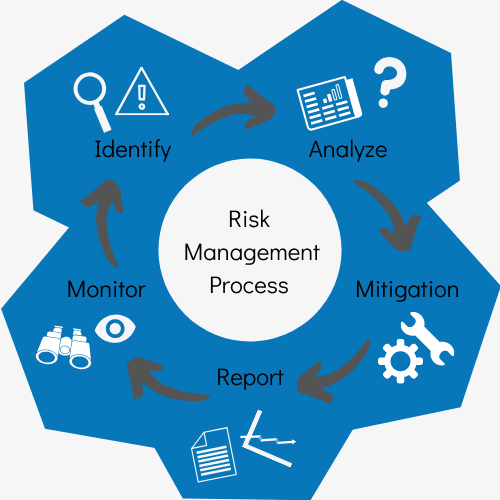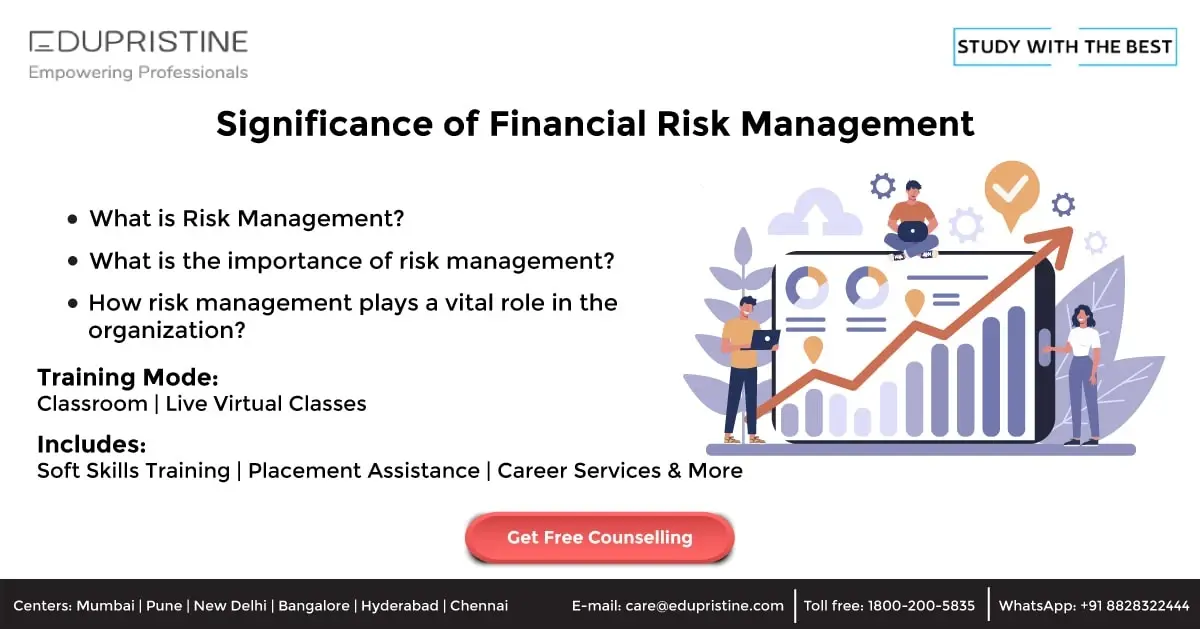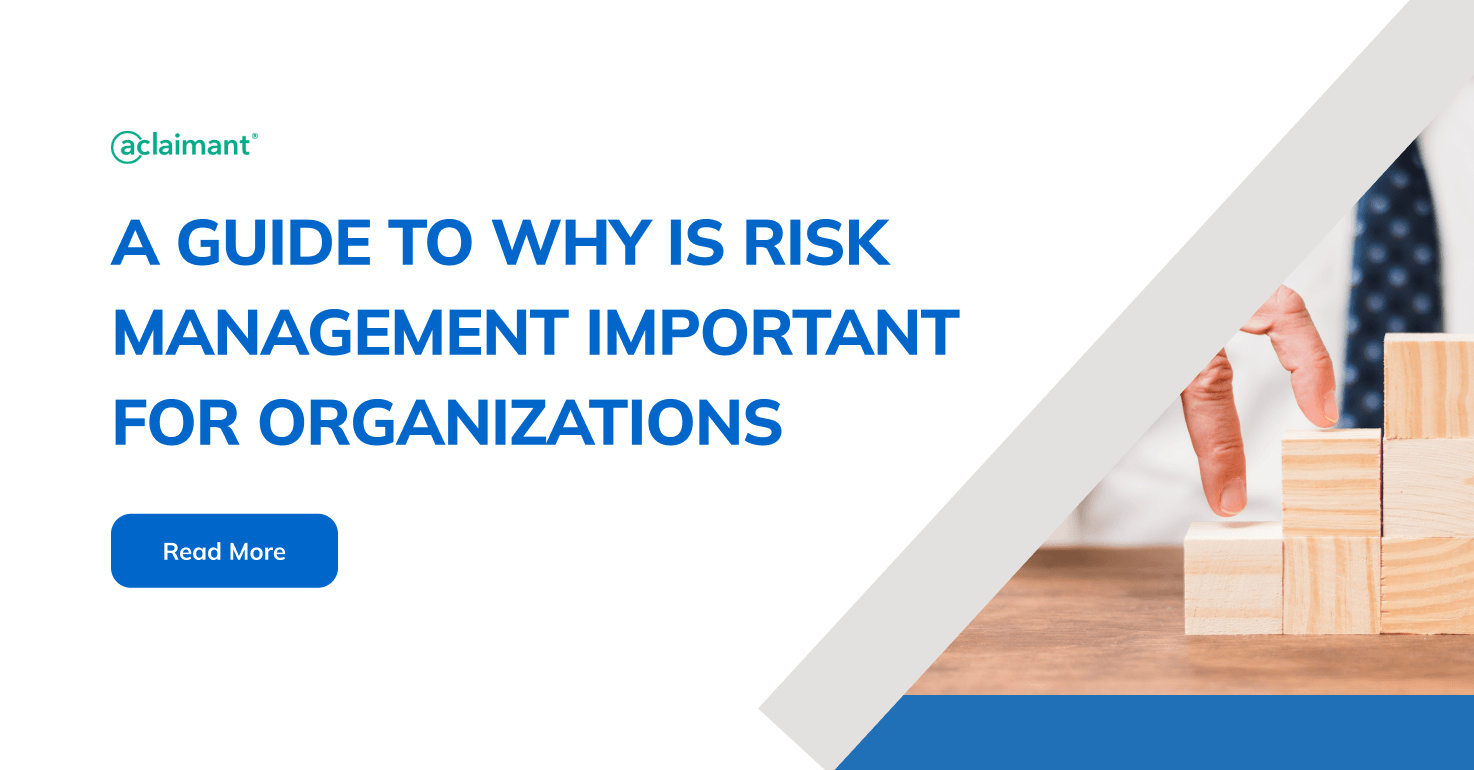The Long-Term Importance of Risk Management in Building Market Advantage
The Long-Term Importance of Risk Management in Building Market Advantage
Blog Article
Checking out the Significance of Risk Management for Effective Decision-Making Methods
In the detailed globe of business, Risk Management emerges as a critical aspect in the decision-making procedure. The capability to determine possible risks and chances, and plan accordingly, can spell the distinction between success and failure.
Recognizing the Concept of Risk Management
Risk Management, an essential component in decision-making, is commonly misconstrued or oversimplified. Usually, it describes the recognition, evaluation, and prioritization of risks to reduce, keep an eye on, and control the chance or influence of unfortunate occasions. It's not simply regarding protecting against adverse outcomes, yet additionally concerning identifying prospective chances. Risk Management entails structured and self-displined strategies, making use of data and informative evaluations. It requires a detailed understanding of the company's context, objectives, and the prospective risks that might combat them. From economic unpredictabilities, lawful liabilities, tactical Management errors, to crashes and natural catastrophes, it attends to different dangers. Importantly, effective Risk Management is not stationary; it's a continual, positive procedure that advances with transforming situations.
The Duty of Risk Management in Decision-Making Processes
In the world of tactical preparation and company procedures, Risk Management plays an integral duty in decision-making processes. It assists in determining possible threats and unpredictabilities that might impact the achievement of organization objectives. By tracing these dangers, companies can create methods to mitigate their impact, making sure organization connection and security. Risk Management therefore ends up being an important tool in decision-making, aiding leaders to make educated selections based upon an extensive understanding of the dangers entailed. It encourages a positive approach, enabling companies to expect and prepare for feasible future situations. This substantially lowers the chance of unfavorable consequences, promoting extra efficient and efficient decision-making approaches. Risk Management offers as an essential element in the decision-making procedures of any kind of company.

Just How Risk Management Boosts Strategic Preparation
In the context of calculated preparation, Risk Management plays a pivotal role. Launching with the recognition of prospective dangers, it further prolongs to the execution of Risk mitigation steps. The role of Risk Management is dynamic but not fixed, as it demands constant surveillance and adjusting of techniques.
Recognizing Prospective Risks

Implementing Risk Mitigation
Having actually developed the significance of determining possible risks, the next action is to explore Risk reduction. This process entails creating and executing methods to handle identified risks successfully. It is a crucial aspect of calculated preparation as it boosts decision-making by lessening possible unfavorable results. Risk mitigation methods can range from Risk evasion, Risk transfer, to take the chance of reduction. Each method should be tailored to the particular Risk, considering its possible influence and the organization's Risk resistance. Moreover, reliable Risk mitigation this post needs a deep understanding of the Risk landscape and the potential effect of each Risk. This understanding allows companies to focus on dangers and allocate resources efficiently, ensuring that one of the most considerable dangers are dealt with first.
Tracking and Readjusting Approaches
Though Risk reduction is a vital action in strategic preparation, constant tracking and adjustment of these techniques is just as important. This continuous procedure enables organizations to recognize brand-new dangers and reassess existing ones, ensuring the implemented strategies continue to be reliable in the ever-changing company environment. It also gives a chance to examine the success of the Risk Management steps, enabling modifications to be made where required, more enhancing strategic planning. Reliable monitoring and adjustment need using analytics and crucial efficiency indicators (KPIs) to measure performance. These tools supply useful data-driven insights that can notify critical decision-making. Monitoring and changing Risk Management approaches is a vital element for improving an organization's resilience and critical planning.
Instance Researches: Successful Risk Management and Decision-Making
On the planet of organization and financing, effective Risk Management and decision-making frequently work as the columns of thriving ventures. One such entity is an international oil company that alleviated financial loss by hedging versus fluctuating oil pop over to this site costs. In an additional instance, a tech start-up prospered by identifying and approving risky, high-reward approaches in an unstable market. A global financial institution, confronted with regulatory uncertainties, successfully navigated the situation via positive Risk assessment and vibrant decision-making. These situations highlight the worth of astute Risk Management in decision-making procedures. It is not the absence of Risk, however the Management of it, that often differentiates successful firms from not successful ones. These situations underscore the important duty of Risk Management in tactical decision-making. importance of risk management.
Tools and Strategies for Efficient Risk Management
Browsing the complex labyrinth of Risk Management needs the right collection of tools and techniques. These tools, such as Risk registers and heat maps, aid in recognizing and evaluating potential dangers. Methods consist of both measurable techniques, like sensitivity evaluation, and qualitative techniques, such as SWOT analysis. These aid in focusing on dangers based upon their prospective effect and chance. Risk feedback techniques, a vital component of Risk Management, entail approving, avoiding, transferring, or mitigating threats. Monitoring and managing threats, through normal audits and evaluations, make certain that the techniques stay effective. With these strategies and tools, decision-makers can navigate the complicated landscape of Risk Management, thereby helping with informed and reliable decision-making.
Future Fads in Risk Management and Decision-Making Strategies
As we check out the substantial landscape of Risk Management, it ends up being obvious that the strategies and devices used today will certainly proceed to advance. The principle of Risk society, where every participant of an organization is mindful and included in Risk Management, will certainly get extra prestige. These fads declare an even more positive and comprehensive method in the direction of Risk Management and decision-making.
Verdict

Risk Management therefore comes to be an important device in decision-making, helping leaders to make informed choices based on a thorough understanding of the dangers entailed. Risk mitigation strategies can vary from Risk evasion, Risk transfer, to take the chance of decrease (importance of risk management). Reliable Risk mitigation needs a deep understanding of the Risk landscape and the prospective influence of each Risk. Risk feedback methods, a vital part of Risk Management, include approving, staying clear of, moving, or mitigating dangers. The principle of discover this Risk society, where every participant of a company is aware and entailed in Risk Management, will certainly get a lot more importance
Report this page